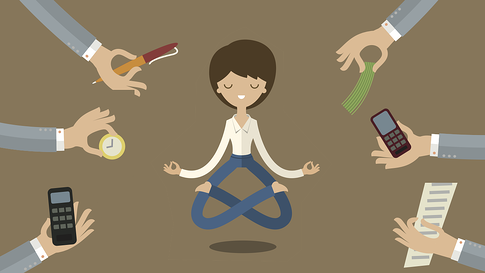Make your social media feed spark joy
December 22, 2020
The solution to healthy social media use isn’t about giving up your favorite platforms - it’s about learning how to engage more intentionally.
OK, so you understand already that social media can be bad for you. How can you not? There’s a new headline telling you so every day. Depression. Anxiety. Impulsiveness. Eating disorders.
And yes, okay, we get it - social media use can be harmful. But it certainly doesn’t have to be.
And that’s good news. Because the truth is, you probably have no desire to quit. And heaven knows your teens don’t either.
Happily, for all of us, experts increasingly advise that healthy social media use isn’t about giving up the habit - it’s about learning how to engage more intentionally.
And while we’re on the subject, the standard advice - to “cut back” - just doesn’t cut it for most.
It’s vague and unrealistic (as anyone who’s ever tried to “cut back” on wine, sugar, or red meat can tell you).
But if your goal is more intentional social media use - focusing on the quality rather than the quantity of your time online - where exactly do you begin?

These evidence-based strategies, recommended by mental health and cyber experts, are a great place to start.
BE SELECTIVE
Of course, you want to keep up with friends and family. Maybe you’re one of the many who also get their news from social media. But be honest: how many platforms do you really need to do that?
If you’re like most social media users, you’re probably scrolling through a number of feeds you don’t even enjoy. So give your social media habit a good de-clutter. If an account you follow doesn’t spark joy, it has no place in your digital home.
BE ENGAGED
Are you a lurker on social media - or an active participant? And no, hitting the “like” button a lot doesn’t actually qualify. Experts advise that commenting and replying (with kindness) will make your social media time more rewarding. It can even boost your mood - because doing something nice for another person does that.
SORT YOUR FOLLOWS
Ping-ponging between memes, world news, funny videos, COVID updates, and family photos is enough to give anybody mental whiplash.
Consider curating your online experience by creating separate accounts that you can access depending on your mood - the funny stuff for a feel-good session, the family news separated from the international news. Some platforms (Twitter, notably) let you create “lists” to make this simpler.
TOSS THOSE PUSH NOTIFICATIONS
Having your phone nag you to pay attention to it is actually kind of ridiculous when you stop to think about it.
Do you really need to see the likes and comments your posts are getting - or failing to get - in real-time? Luckily there’s an easy way to prevent technology from pulling your strings: turning off notifications at the source.
STOP HATE-FOLLOWING
Why would anyone follow a person they dislike intensely, have contempt for, believe to be mentally or morally unhinged - or all of the above? Probably because at some level it makes us feel superior, say experts.
Ultimately, though, hate-following is a toxic habit that brings us down, stirring up negative emotions for absolutely no upside.
TURN DOWN THE VOLUME
So say you have friends, coworkers, or family members whose posts you’d really prefer not to see in your feed - for whatever reason. (And don’t we all?) But unfollowing and unfriending are so aggressive, and you don't want to offend.
Why not try a gentler solution and simply “mute” them? That means you won’t see their posts but they won’t know that - and they can still message you.
REFRESH YOUR FOLLOWS
Getting rid of the toxic accounts in your feed is important - but so is adding news ones that bring you joy. Don’t stay in the same old social media rut. Use that “explore” feature to find new follows that teach, inspire, or just make you feel amazing.
SET BOUNDARIES THREE WAYS
Without clear boundaries, social media use can easily spiral out of control, no matter what age we are. Here are the three ways you can get some structure into your social media use.
Time boundaries, which can be easily set and managed for every member of the family through your smartphone controls or with Family Zone.
Space boundaries, which could consist of banning social media from the dinner table, for example, or the car or the bedroom.
Content boundaries, simply opting out of certain types of content to help you curate a healthier experience and protect you from fake news.
Try Family Zone for FREE
Sign up now to try Family Zone for 1 month, totally free of charge.
SIGN UPTopics: Screen Time, Social Media, Student Safety
Try Family Zone for FREE
Sign up now to try Family Zone for 1 month, totally free of charge.
Free TrialSubscribe to our newsletter
Popular posts
Recent posts
Cyber-vigilantism on TikTok
A vigilante-type US hacker group that recently gained traction on TikTok has parents wondering what they need to do to safeguard their ...
Try Family Zone for FREE
Sign up now to try Family Zone for 1 month, totally free of charge.
Sign Up